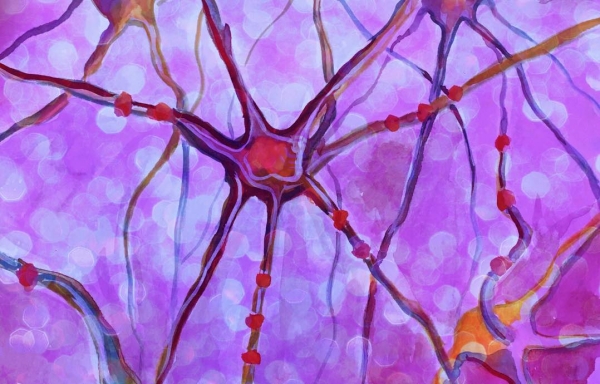Our brains function according to the “use it or lose it” phenomenon: If a skill or piece of information is underused, it becomes harder, if not impossible, to recall it. Conversely, reviewing new knowledge or practicing an action is one of the best ways to strengthen the memory and prevent it from easily degrading.
Learning and memory is made possible by synaptic plasticity, the brain’s malleable ability to form, alter, or lose physical connections, known as synapses, in response to environmental input.
In the past, scientists believed that synapses were only able to undergo structural changes in the developing brains of children and infants, but they now know that the adult brain is also capable of similarly flexible changes. Researchers are still investigating the mechanisms underlying these changes. A recent study from McGill researchers at the Montreal Neurological Institute suggests that netrin proteins may be the key.
“We’ve identified a key molecular mechanism of the synapse that underlies [the memory’s] ‘use it or lose’ it phenomenon,” Timothy Kennedy, associate professor in McGill’s Department of Anatomy and Cell Biology, said in an interview with //The McGill Tribune//. “If you use the synapse, that then makes it stronger. It is like you’re enhancing a pathway. And if you believe changes in neural circuits are what underlie memories, which there is pretty good evidence for, then what we’re doing is we’re changing the function of that neural circuit, and we’re changing the memory.”
When our brains learn new information, it is relayed across synapses using chemical messengers known as neurotransmitters. This process can be improved by releasing more neurotransmitters or by increasing the number of receptors in receiving synapses. Kennedy identified netrins, a class of proteins, as aiding the latter.
Although netrin’s role in neuron cell guidance and brain circuitry in infants is well documented, studies show that netrin plays an important role in the adult brain as well. When a signal is ready for transmission, the synapse releases netrin, increasing the number of receptors on the receiving neuron and allowing for a greater intake of the relayed chemical signal.
“The relatively subtle changes that happen in your brain when you’re learning things and […] having everyday experiences […] are changing how netrin is presented to neurons,” Kennedy said.“Neurons are secreting netrin and changing the strength of connections between cells and neural networks.”
Many neurodegenerative diseases, such as Alzheimer’s, Parkinson’s, and Huntington’s, have been linked to impairments in the synaptic plasticity mechanism. Specifically, an understanding of netrin shows that dysfunctional synapses can result from reduced levels of netrin, similarly to the way in which muscles would atrophy if the mechanisms involved in muscle formation are damaged. The Kennedy Lab is examining aging as one such factor, since most neurodegenerative diseases have onsets in later life. Determining the details of the netrin mechanism may open new doors for treatment.
“You can flip [reduced levels of netrin] on its head,” Kennedy said. “If you promote the netrin mechanism, you might actually rescue some of those deficits [in neurodegenerative disease]. We’re trying to understand that.”








